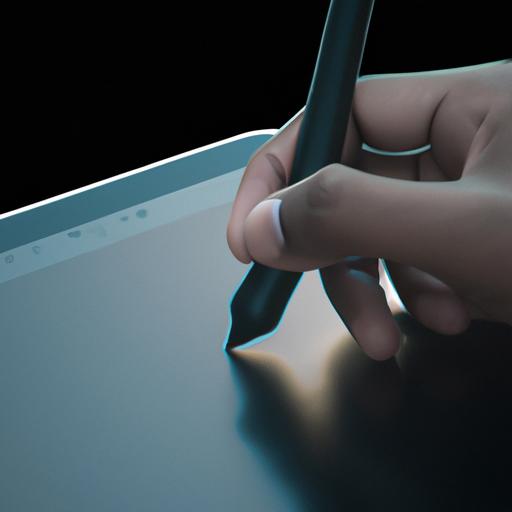As a designer, you know that time is of the essence when it comes to creating stunning visuals. Whether you’re working on a new project or trying to keep up with a tight deadline, anything that can help speed up your workflow is a valuable tool. That’s where Photoshop actions come in.
Actions are pre-recorded commands that can automate repetitive tasks in Photoshop. They can save you time, increase your productivity, and help you achieve consistent results across different projects. But how do you create an action in Photoshop?
In this comprehensive guide, I’ll walk you through the process of creating an action in Photoshop. We’ll cover everything from understanding what actions are to customizing your actions and using them effectively. By the end of this article, you’ll be able to create your own actions and streamline your workflow like a pro.
So, let’s dive in and learn how to create an action in photoshop!
Understanding Actions in Photoshop

Defining Actions in Photoshop
Actions in Photoshop are pre-recorded sets of commands that can automate repetitive tasks. They are designed to help you save time and streamline your workflow. Once you create an action, you can use it multiple times, reducing the time and effort required to perform the same task manually.
Different Types of Actions in Photoshop
There are two types of actions in Photoshop: Default Actions and Custom Actions. Default Actions are pre-installed by Adobe and can be found in the Actions panel. Custom Actions, on the other hand, are created by users to suit their specific needs.
Benefits of Using Actions in Photoshop
The benefits of using actions in Photoshop are numerous. They help save you time, increase your productivity, and ensure consistency across different projects. Actions can also help you learn new techniques as you create and customize them to suit your specific needs. By using actions, you can focus on the creative aspects of design while leaving repetitive tasks to automation.
Step-by-Step Guide: Creating an Action in Photoshop

Creating an action in Photoshop is a straightforward process that requires a few prerequisites. Before you start, make sure you have the following:
Prerequisites for Creating an Action
1. A basic understanding of Photoshop’s interface and tools
You don’t need to be an expert, but you should be familiar with Photoshop’s layout and have a basic understanding of its tools.
2. A clear idea of the task you want to automate
Actions are designed to automate repetitive tasks, so it’s essential to have a clear idea of what you want to achieve before you start creating an action.
Once you have the prerequisites, you can start creating your action by following these steps:
Step-by-Step Process of Creating an Action in Photoshop
1. Open the Actions panel
Go to the “Window” menu and select “Actions” to open the Actions panel.
2. Create a new action set
Click on the “New Set” button at the bottom of the Actions panel to create a new action set. This will help you organize your actions.
3. Create a new action
Click on the “New Action” button at the bottom of the Actions panel to create a new action. This will open the New Action dialog bo
4. Record the action
Click on the “Record” button in the New Action dialog box to start recording your action. Perform the task you want to automate, and Photoshop will record the steps.
5. Stop recording the action
Click on the “Stop” button in the Actions panel to stop recording your action.
6. Name and save the action
Give your action a meaningful name and save it in the appropriate action set.
Naming and Saving Your Action
Naming and saving your action is an essential step in the process. A clear and descriptive name will help you identify the action later, and saving it in the appropriate action set will help you keep your actions organized.
In the next section, we’ll discuss how to customize your actions to suit your needs.
Customizing Your Action
Once you’ve created your action, it’s time to customize it to suit your needs. This step is crucial because it allows you to tailor the action to your specific workflow, making it even more efficient. Here’s how you can customize your action in Photoshop:
How to Customize Your Action to Suit Your Needs
-
Open the Actions panel: To customize your action, you’ll need to open the Actions panel. You can do this by going to Window > Actions or by pressing Alt+F9 (Windows) or Option+F9 (Mac).
-
Select your action: Once the Actions panel is open, select the action you want to customize.
-
Click on the menu icon: Next, click on the menu icon in the top-right corner of the panel and select “Edit”.
-
Edit your action: This will open the Action dialog box, where you can edit your action. You can add or remove commands, change settings, and adjust values to suit your needs.
Different Options for Editing Your Action
There are several options for editing your action in Photoshop. Here are some of the most common ones:
-
Adding commands: You can add new commands to your action by clicking the “Record” button and performing the action you want to add. Once you’re done, stop recording and the new command will be added to your action.
-
Removing commands: If you’ve added a command by mistake or no longer need it, you can remove it by selecting it in the Actions panel and clicking the trash icon at the bottom of the panel.
-
Changing settings: You can change the settings of individual commands by double-clicking on them in the Actions panel. This will open the Options dialog box, where you can adjust the settings to suit your needs.
The Importance of Testing Your Action Before Using It
Before you start using your custom action, it’s important to test it to make sure it works as intended. Here are some tips for testing your action:
-
Test it on a sample image: Use a sample image to test your action and make sure it produces the desired results.
-
Watch for errors: Keep an eye out for any errors or unexpected results while testing your action.
-
Refine as needed: If you encounter any issues while testing your action, go back and refine it until it works perfectly.
Remember, customizing your action is an essential step in creating a workflow that’s tailored to your needs. So take the time to customize and test your actions to ensure maximum efficiency.
Using Your Action
Now that you’ve created your own action in Photoshop, it’s time to put it to use. Here’s a step-by-step guide on how to use your action in Photoshop:
Step 1: Load Your Action
To use your action, you first need to load it into Photoshop. Go to the Actions panel (Window > Actions) and select the action you want to use. Click the Play button at the bottom of the panel, and your action will start running.
Step 2: Apply Your Action
Once your action is loaded, you can apply it to your image. There are several ways to do this:
Method 1: Keyboard Shortcut
If you’ve assigned a keyboard shortcut to your action, simply press the corresponding keys to apply it to your image.
Method 2: Click and Play
You can also apply your action by clicking the Play button in the Actions panel. This will run your action on the currently selected layer.
Method 3: Drag and Drop
Finally, you can apply your action by dragging and dropping it onto your image. Simply drag your action from the Actions panel onto your image, and it will run automatically.
Step 3: Adjust Your Action
Depending on the complexity of your action, you may need to adjust it to suit your needs. You can do this by editing your action in the Actions panel. Simply double-click on your action to open it, and make any necessary changes.
Step 4: Use Your Action Correctly
When using your action, it’s important to use it correctly to achieve the best results. Make sure you apply your action to the appropriate layer and use it in the correct order. Test your action on different images to make sure it works consistently.
By following these steps, you can use your action in Photoshop to speed up your workflow and achieve consistent results across different projects. Remember to use your action correctly and make any necessary adjustments to get the best results.
Conclusion
In conclusion, creating actions in Photoshop is an essential skill for any designer looking to streamline their workflow and increase their productivity. With the step-by-step guide outlined in this article, you now have all the knowledge you need to create your own actions in Photoshop.
Remember to keep in mind the E-A-T principles of Expertise, Authority, and Trustworthiness as you create and use your actions. Test your actions before using them on important projects, and customize them to suit your specific needs.
At Ngcloudy.com, we understand the importance of staying up-to-date with the latest trends and techniques in design. That’s why we’re committed to providing high-quality resources and tutorials to help you elevate your skills and achieve your goals.
So, what are you waiting for? Start creating your own actions in Photoshop today and take your design game to the next level!

